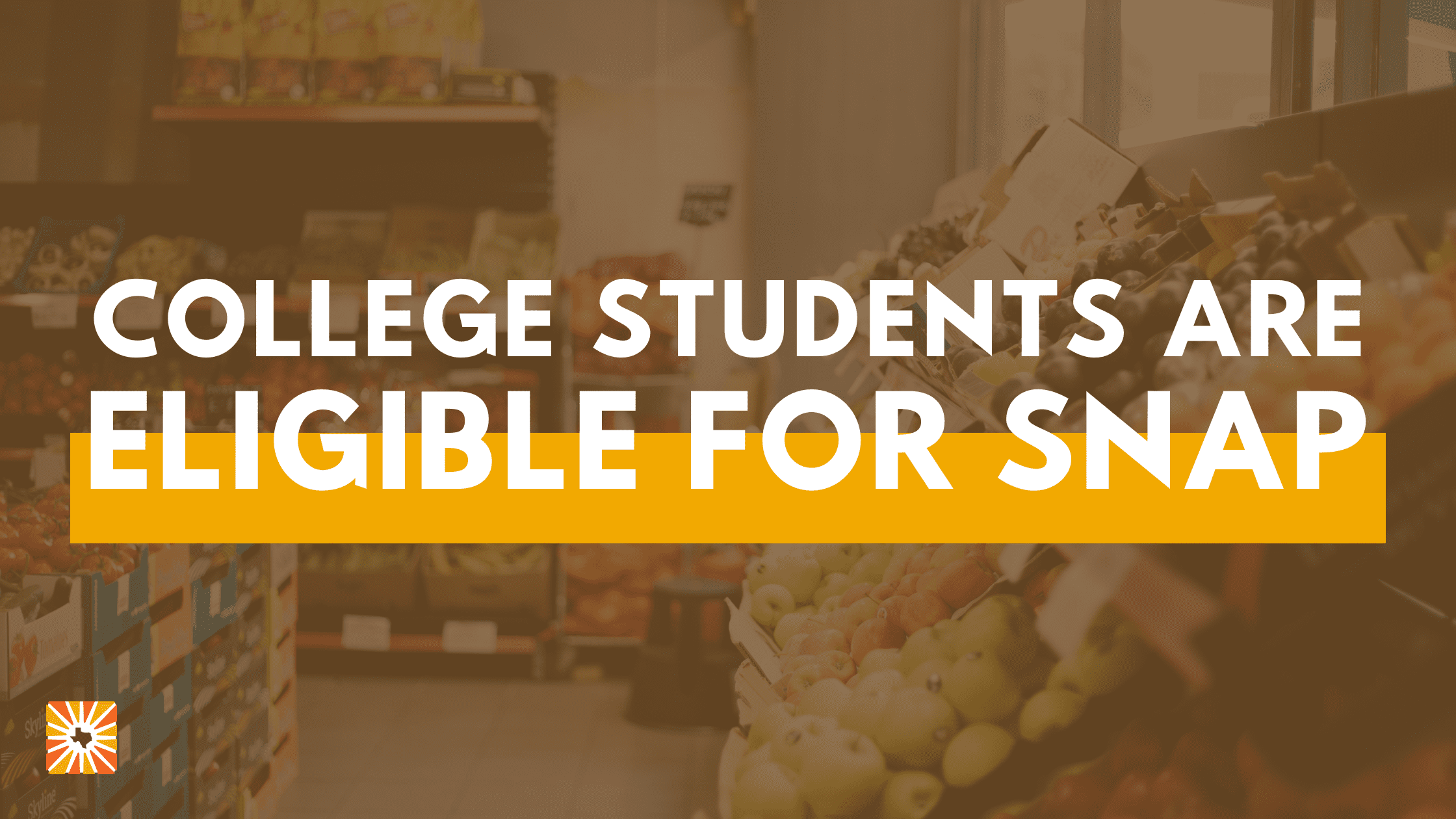The white, middle- to upper-class college student is becoming a stereotype of the past. Today, students are more likely to be people of color, first-generation immigrants, LBGTQ+ people and/or people from low-income backgrounds who work multiple jobs and care for a dependent while in school. While the look and socioeconomic backgrounds of college students are changing rapidly, so are the tuition and other fees associated with going to college. The Pell Grant was created to make college more affordable for low-income students. Unfortunately, the Pell Grant currently only covers about 28% of the cost of attending a public university — and with recent inflation trends, that percentage continues to decrease. The financial burden on students leaves little left for food and other basic needs, which in turn can pressure some to drop out of school.
Enrollment in the Supplemental Nutrition Assistance Program (SNAP) is the best defense against hunger. However, many students don’t know that they qualify for SNAP. Even worse, the application process is complex and confusing, usually leading to low enrollment among this vulnerable population. Statistically, of college students eligible for SNAP, only 4 out of 10 are enrolled. SNAP is a great option for college students to offset the costs and mental fatigue associated with college, but students need to know about it and understand where to get help. To address food insecurity among college students, SNAP policies need to be updated to meet increasing demand, and that information needs to be made more accessible to students.
In an effort to mitigate the burden associated with the COVID-19 pandemic, Congress made temporary changes to SNAP to allow more students to qualify. Students who are eligible to participate in state or federally funded work-study or who have an Expected Family Contribution of $0 may now qualify for SNAP if they meet other eligibility requirements. These exemptions will be in effect at least until January 2023. After that, Congress will either extend the Public Health Emergency (PHE) or we will return to the pre-pandemic requirements.
We need your help as we work to ensure all eligible students in Texas receive SNAP benefits, so no one has to worry about choosing between a meal or rent money.
Help spread the word about SNAP today.
Here’s what you need to know about your eligibility for SNAP enrollment:
Students eligible to participate in state or federally funded work-study during the school year may be asked to provide:
- A copy of your financial aid award letter to show you are eligible for work-study. You can find this letter in your school’s financial aid portal or request it from your financial aid office and/or advisor; or
- A letter from your school indicating that you are eligible for work-study.
You can also submit a request to your school to confirm your work-study eligibility directly to your state’s SNAP agency.
Students who have an Expected Family Contribution (EFC) of 0 in the current academic year may be asked to provide:
- A copy of your financial aid award letter or your Student Aid Report (SAR) to show that you have an EFC of 0;
- A letter from your school indicating that you have an EFC of 0; or
- A copy of your financial aid award letter or letter from your school displaying the Pell Grant amount you’ve received.
You can also submit a request to your school to confirm your EFC amount to your state SNAP agency. Financial Aid Administrators may use unemployment documentation — including receipt of unemployment benefits or letters from the state unemployment agency — to reduce or adjust to 0 the income earned from work for you or your parents.
As a Texas student, you should never have to choose between school and a meal. Apply for SNAP here.
